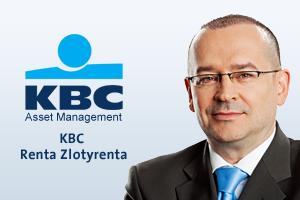
The last six months can be broadly divided into three periods. In the first, between October 2012 and the end of December 2012, prices of Polish bonds were rising. Yields on benchmark securities decreased as follows: two-year maturities – from 4.05% to 3.12%, five-year – from 4.19% to 3.22%, ten-year – from 4.68% to 3. 73%. In the second period between December 2012 and the beginning of March 2013, domestic debt had an impact on prices. Yields increased to 3.56% (two-year maturities), 3.70% (five-year) and 4.11% (ten-year).
The third and final period (March 2013) was good, with two-year, five-year and ten-year yields falling to 3.15%, 3.45% and 3.92%, respectively. Over the whole six-month period, i.e. the fourth quarter of 2012 and the first quarter of 2013, bond yields overall. Two-year bonds dropped most, by around 90 basis points, while five and ten-year bond yields each fell some 75 basis points.
Factors that influenced investors’ decisions can be divided into two categories: external and internal. The biggest external factor driving debt market sentiment was the global investment climate. In the first period there was a deterioration in sentiment towards bonds in the global markets, chiefly because of the good macroeconomic data coming from the USA in particular. Internal factors were related to Polish economic data, especially inflation and the interest rate policy as set by the National Bank of Poland’s Monetary Policy Council. The macroeconomic data published during the period were negative and thus supported the demand for Polish bonds. PMI manufacturing in 4Q 2012 was the weakest for three years. CPI fell year-on-year from 3.8% at the beginning of period to 1.3% at the end of the first quarter of 2013. Industrial production and retail sales were also disappointing. The weaker data prompted a change in the rhetoric coming from the MPC. Between November 2012 and March 2013 the MPC cut interest rates five times by a total of 150 basis points. Polish government bonds were the largest component in the portfolio. Corporate bonds accounted for a very small percentage of just 0.52% From October to December 2012, the KBC Renta Zloty portfolio was slightly overweight in comparison to the benchmark. At the end of 2012 the duration was adjusted to bring it into line with the benchmark. Between January and February the portfolio duration was still balanced around the benchmark, but was increased in the second half of March to around 110%. The
selection generated moderately positive results. The portfolio consisted mostly of instruments at the long end of the yield curve. The most overweight maturity segments were 7-10 years and 10-20 years. This proved to be a good move; although the yield curve became steeper in the short term, in January and February, the change was small. The result for the two quarters under review (Q4 2012 and Q1 2013) was slightly below that of the benchmark. The difference, calculated as unit value and cost-adjusted benchmark was 0,05. However, the results both at the end of 2012 and at the end of Q1 2013 were above the benchmark (0.16 and 0.02, respectively).
We are maintaining our positive view of the market. Recent increases in bond prices in Europe will support the Polish debt market. Yields on ten-year German bonds dropped from 1.46% at the beginning of March to 1.28% at the end of the month. The fiscal position in Poland remains stable. More than 60% of the government’s borrowing requirements for this year are currently covered, partly due to pre-financing in 2012. Poland should still perform above the average for Europe, and especially Southern Europe. The main risk to our scenario could be a bigger than expected slowdown. That could spark foreign investors’ concerns regarding the public finance deficit and lead to increased sales of bonds at the long end of the yield curve. The weakening of the Polish zloty could also hit sentiment.The zloty lost around 0.75% against the euro in March, though taken over the period October 2012 – March 2013, the zloty strengthened by around 1.5% against the euro.




